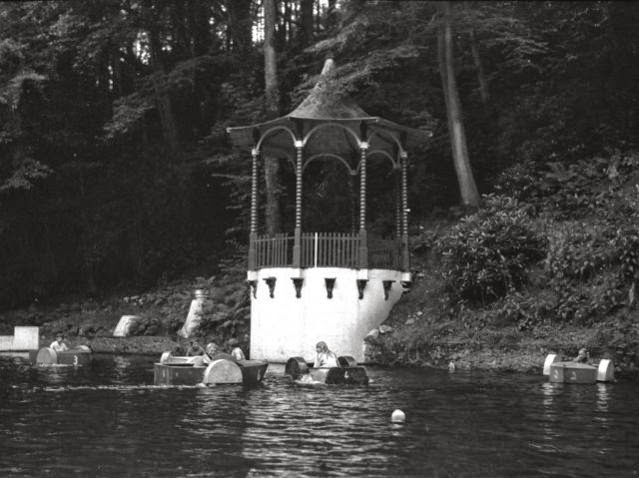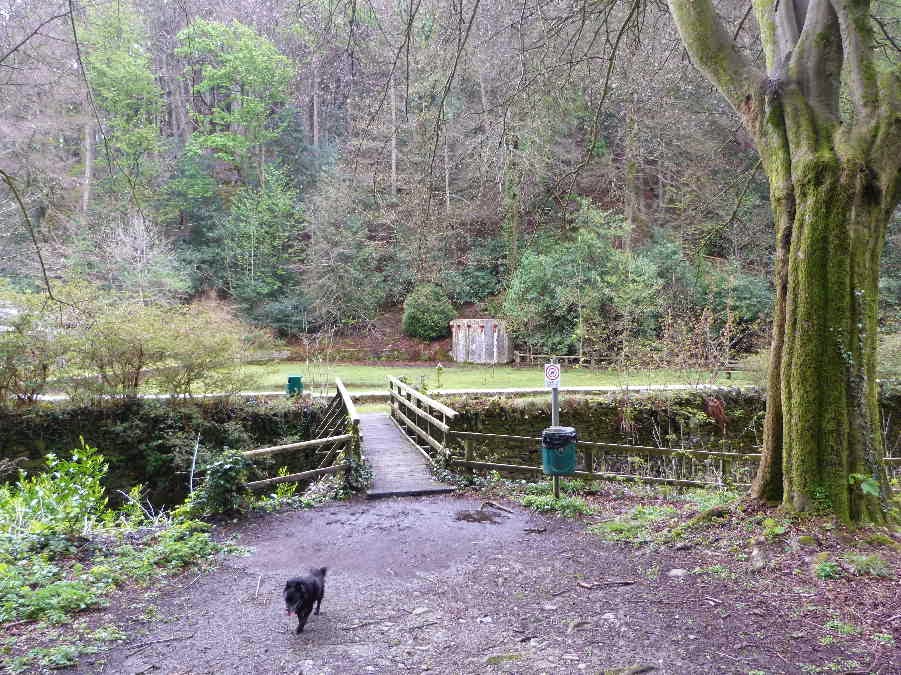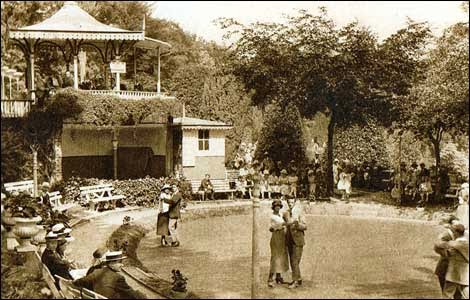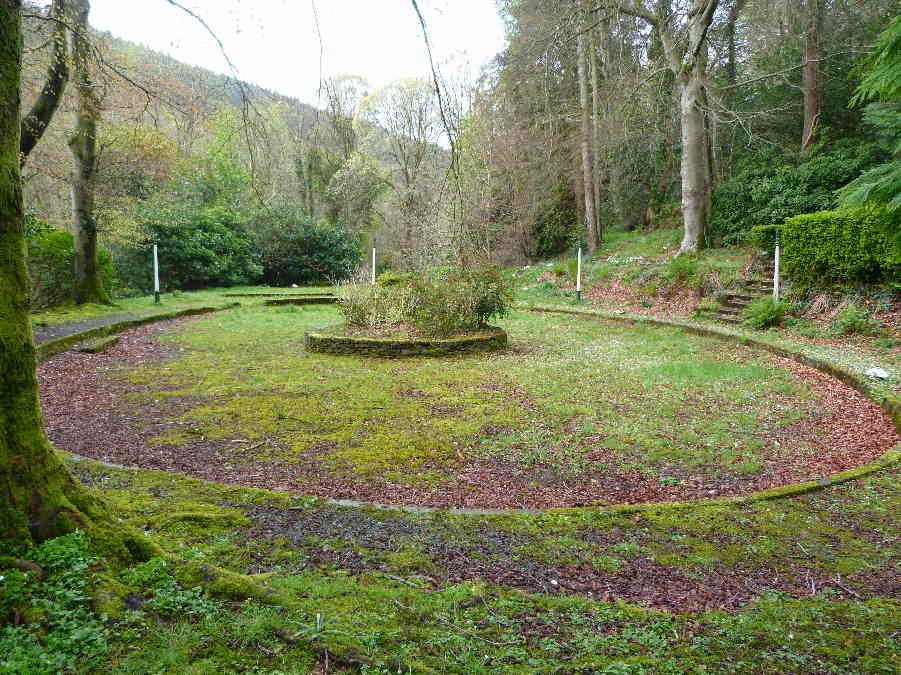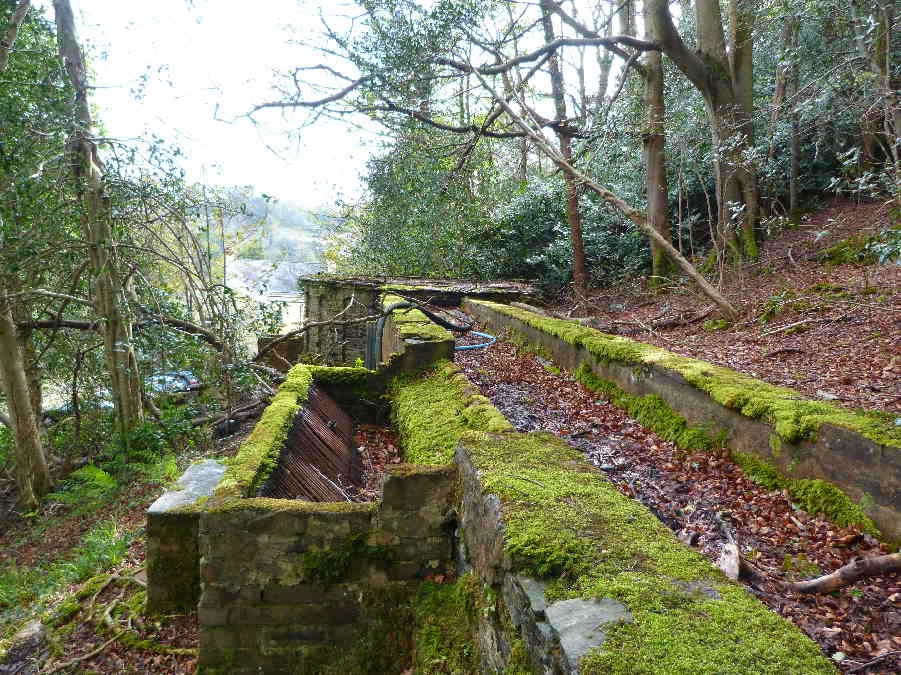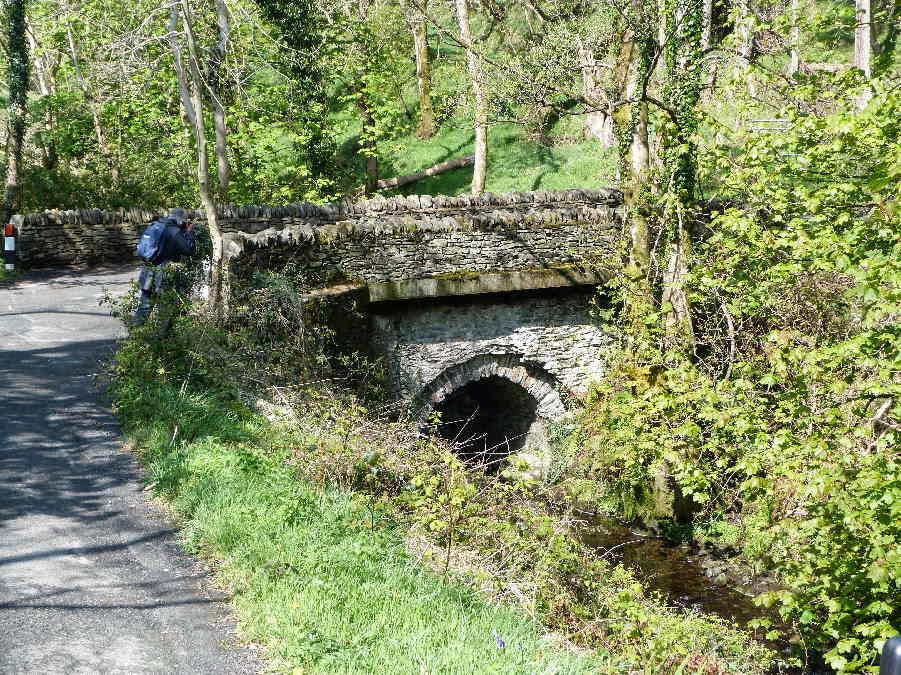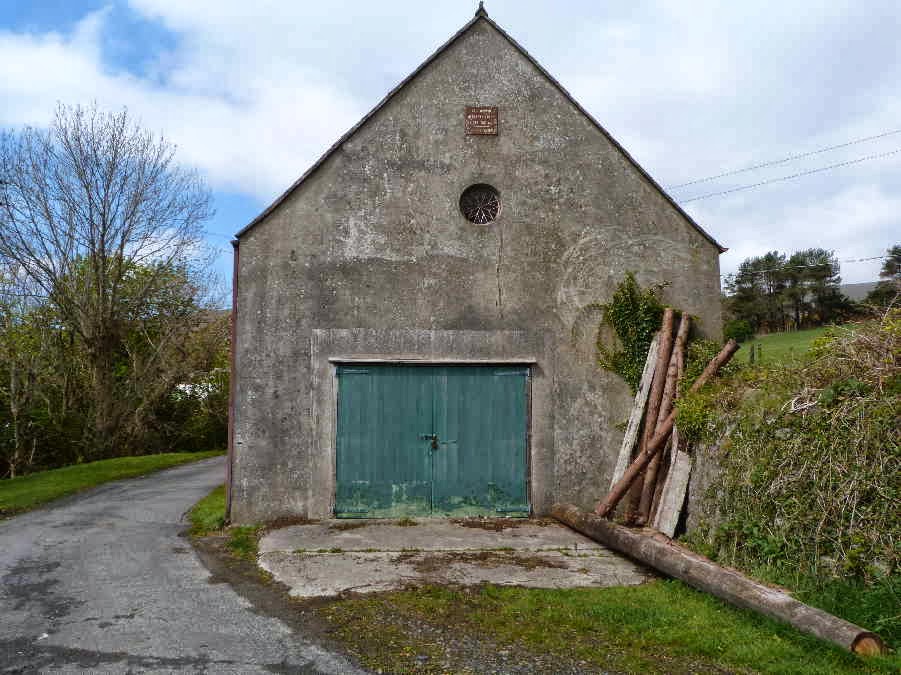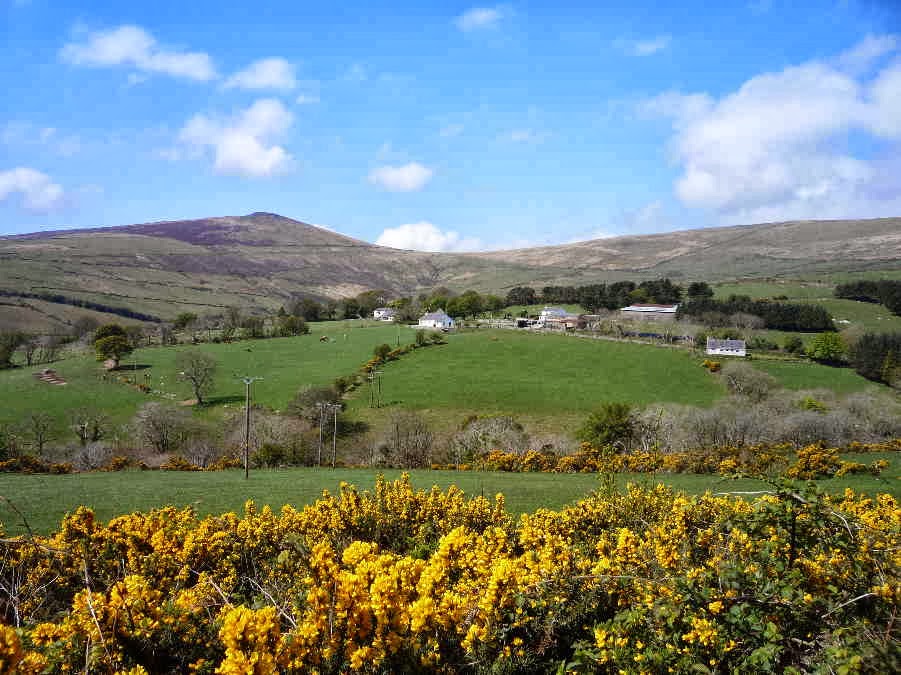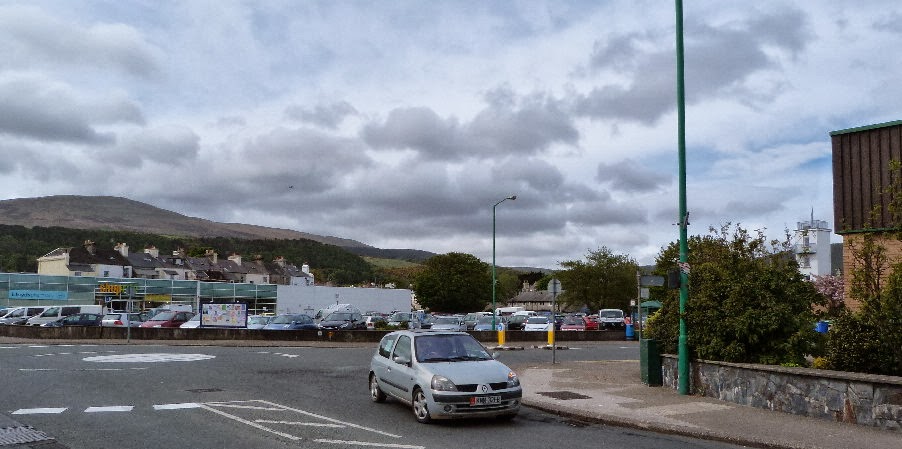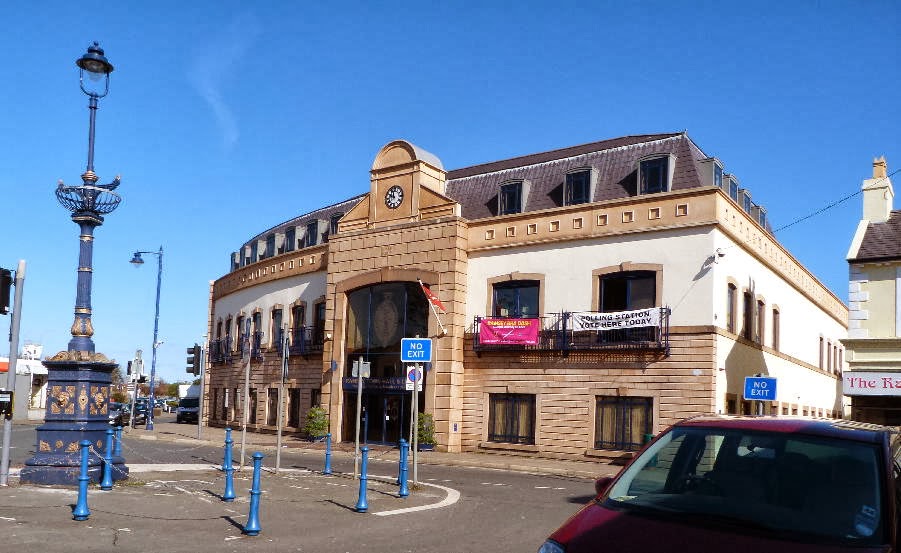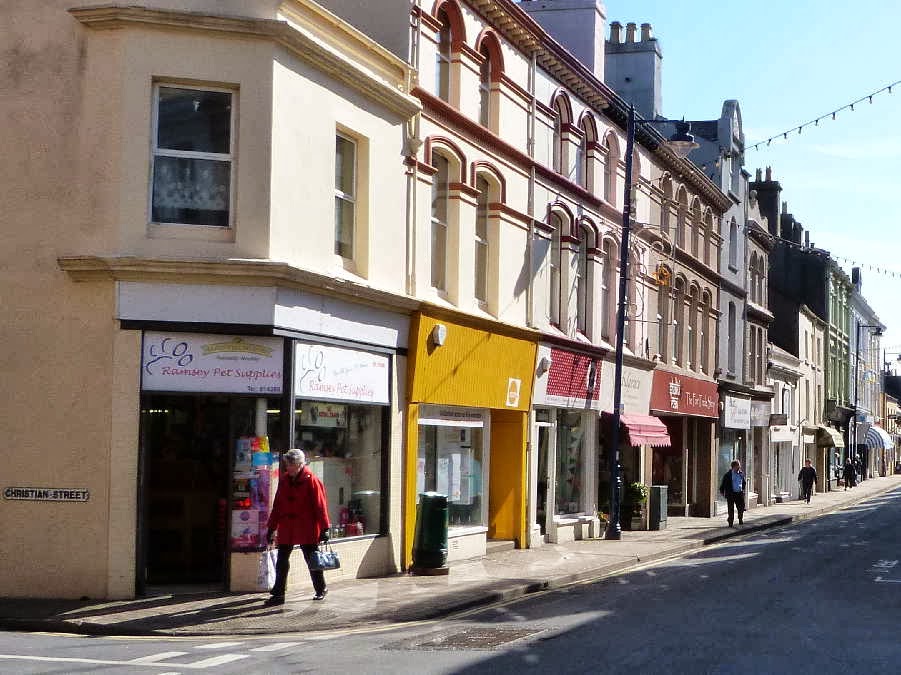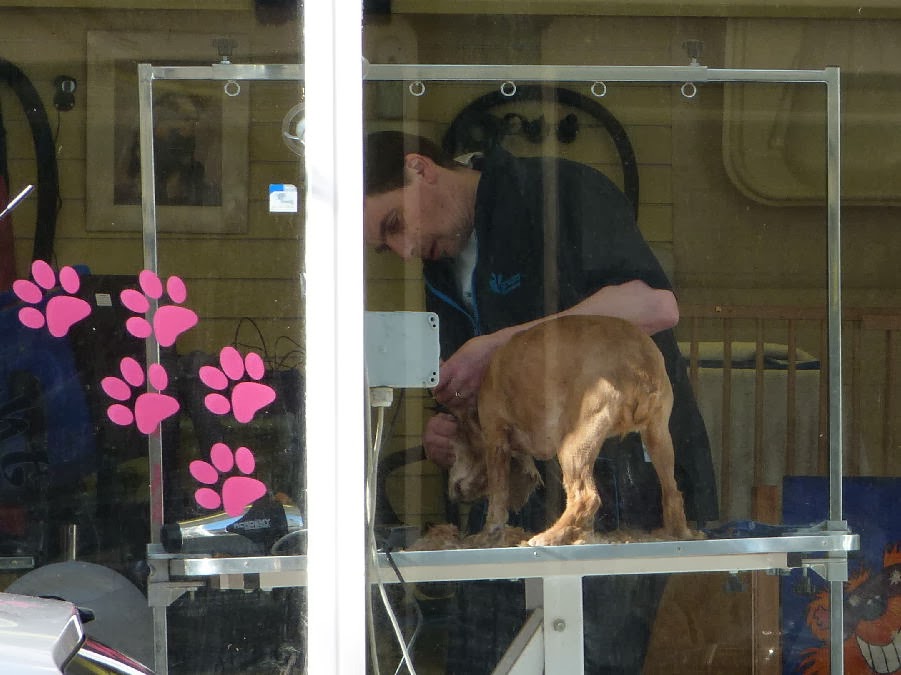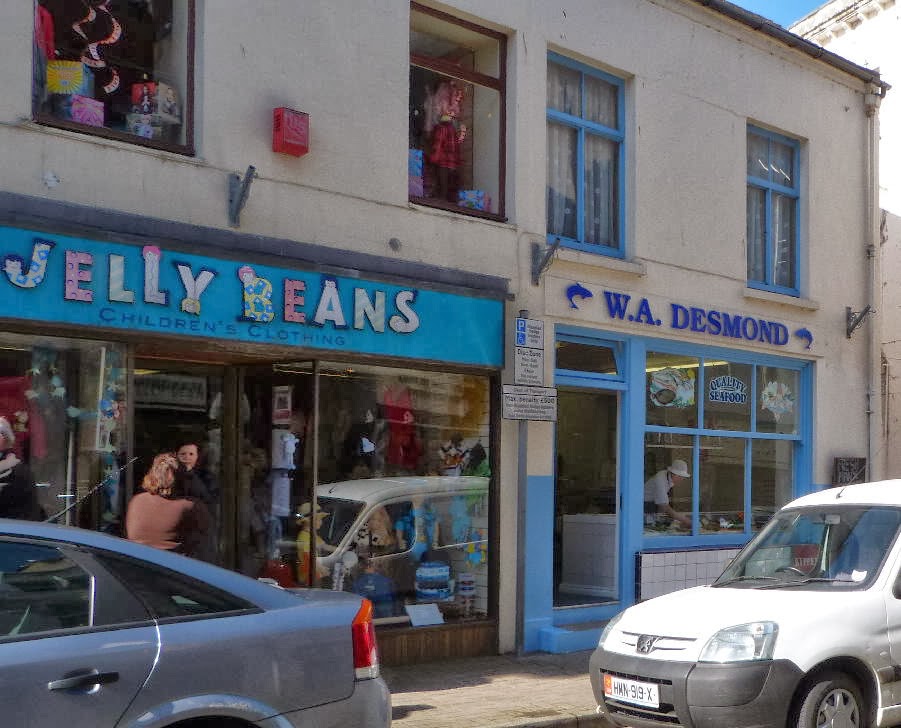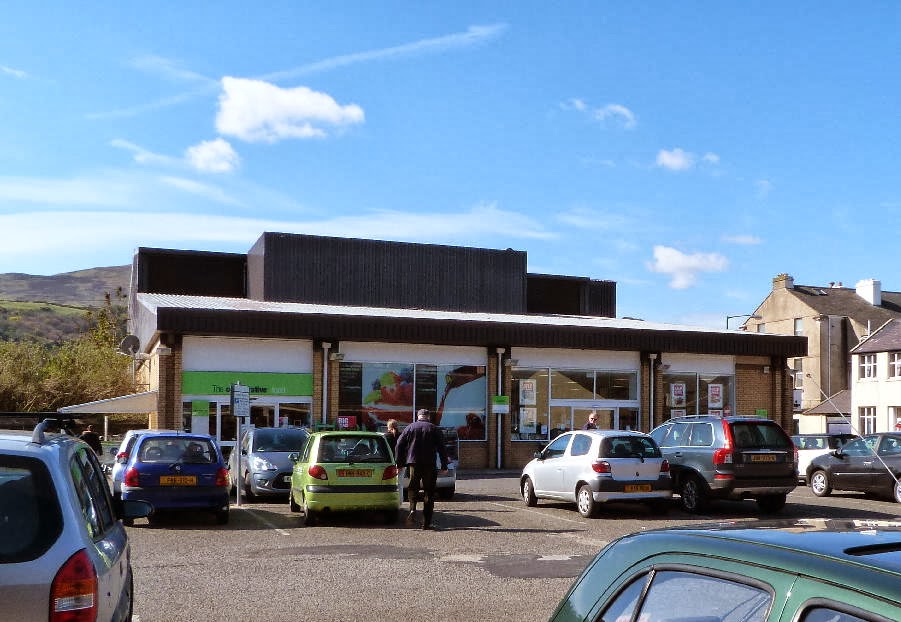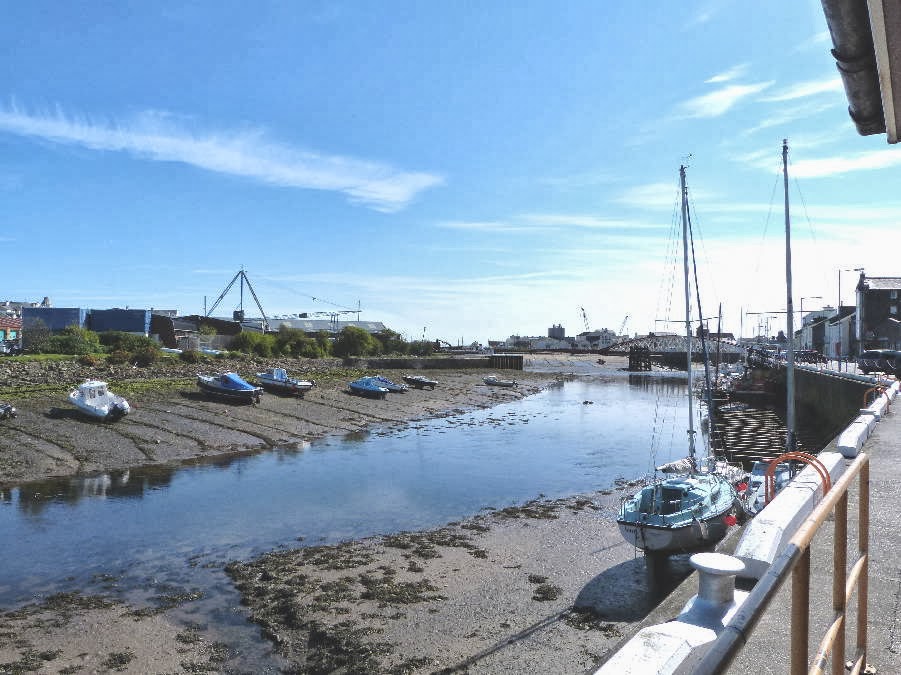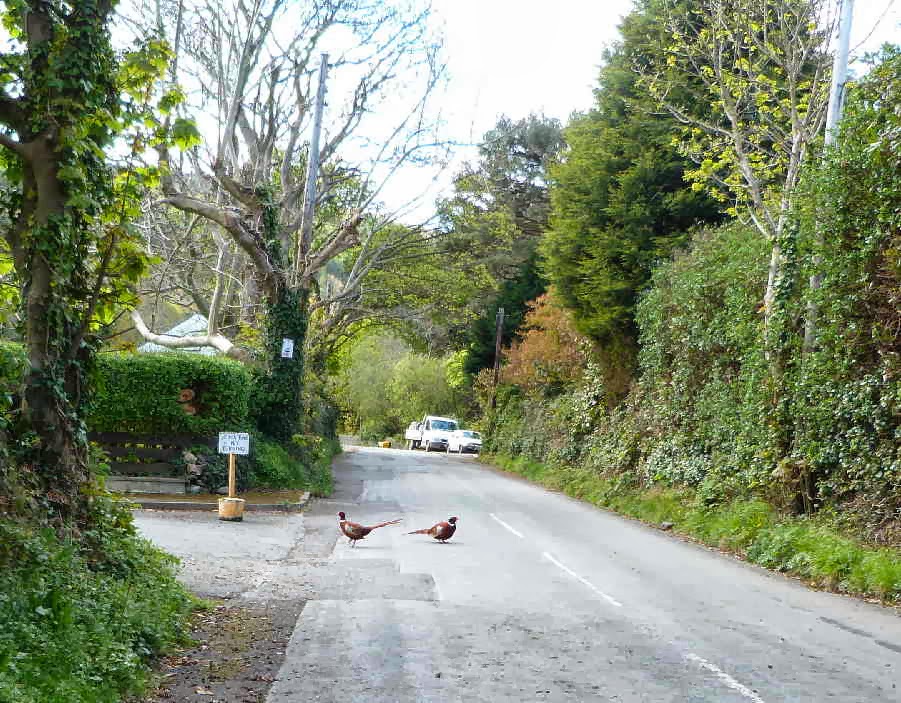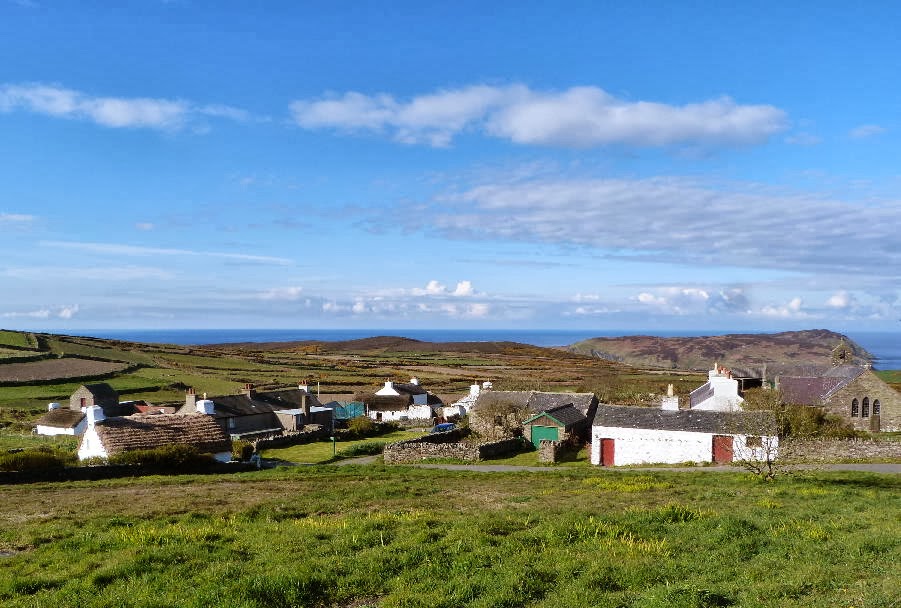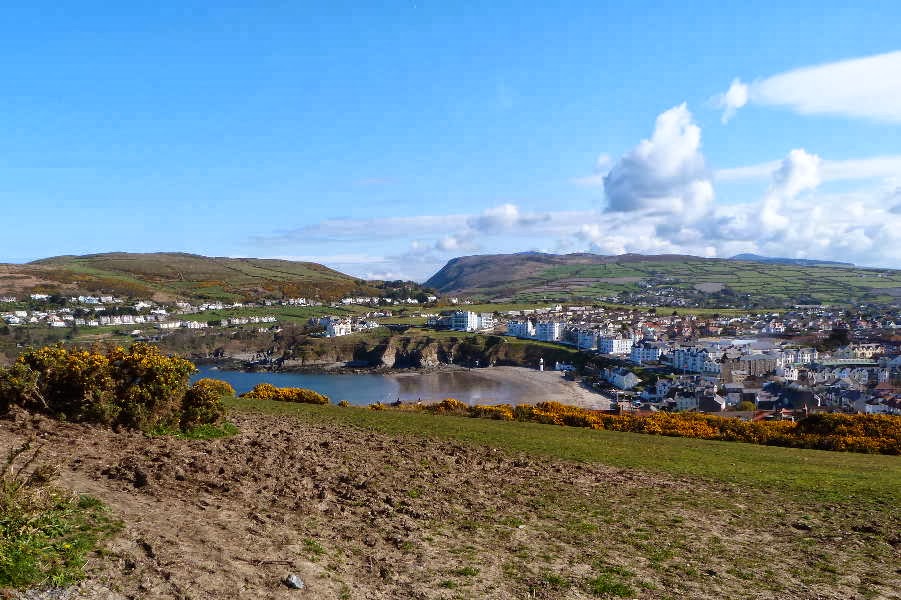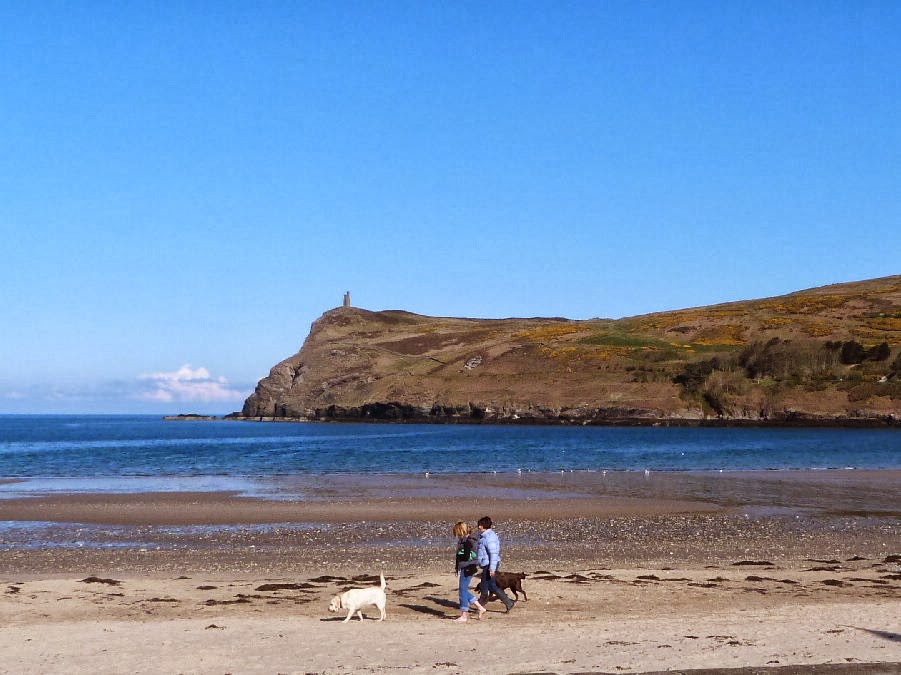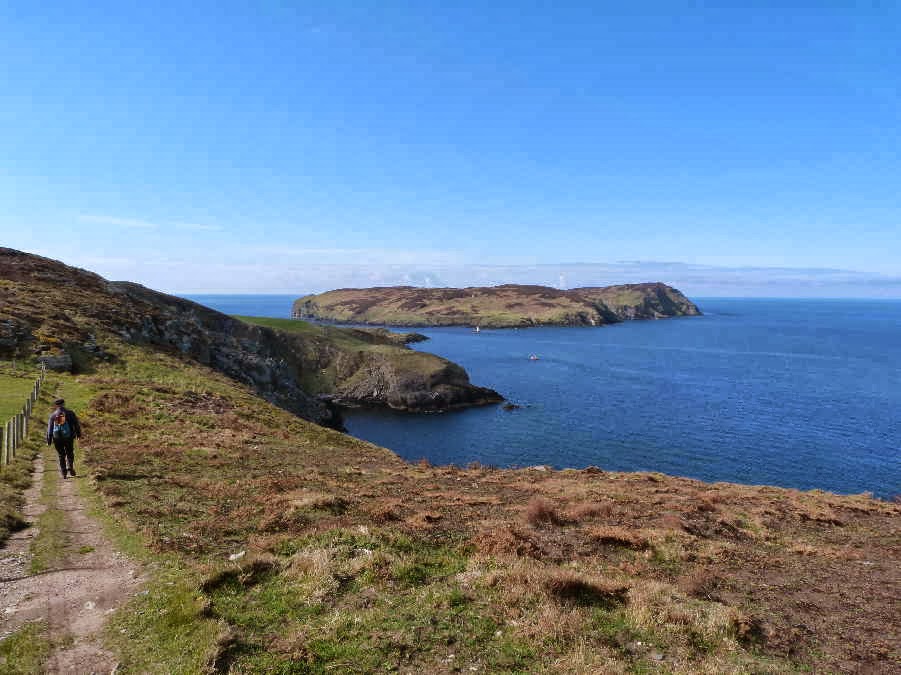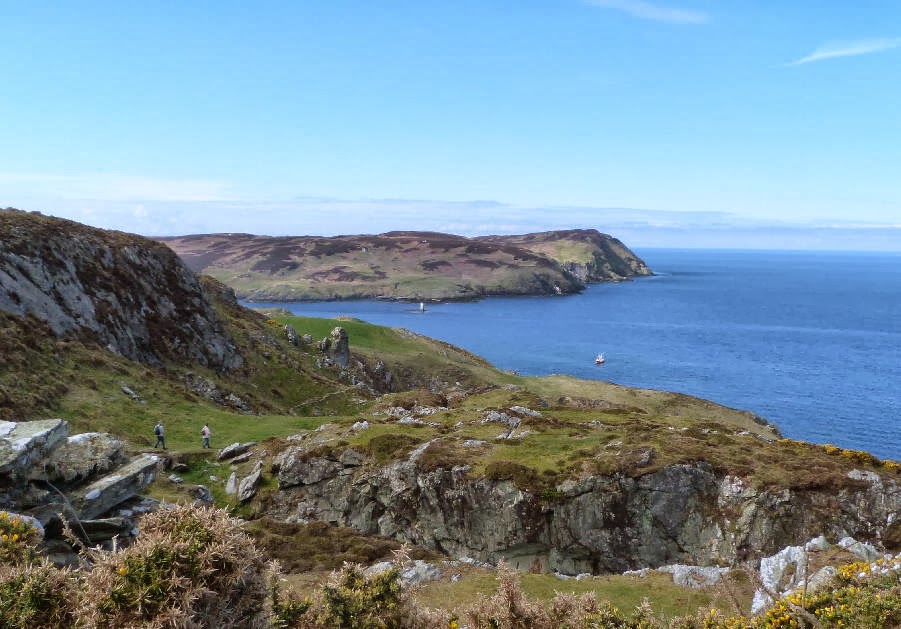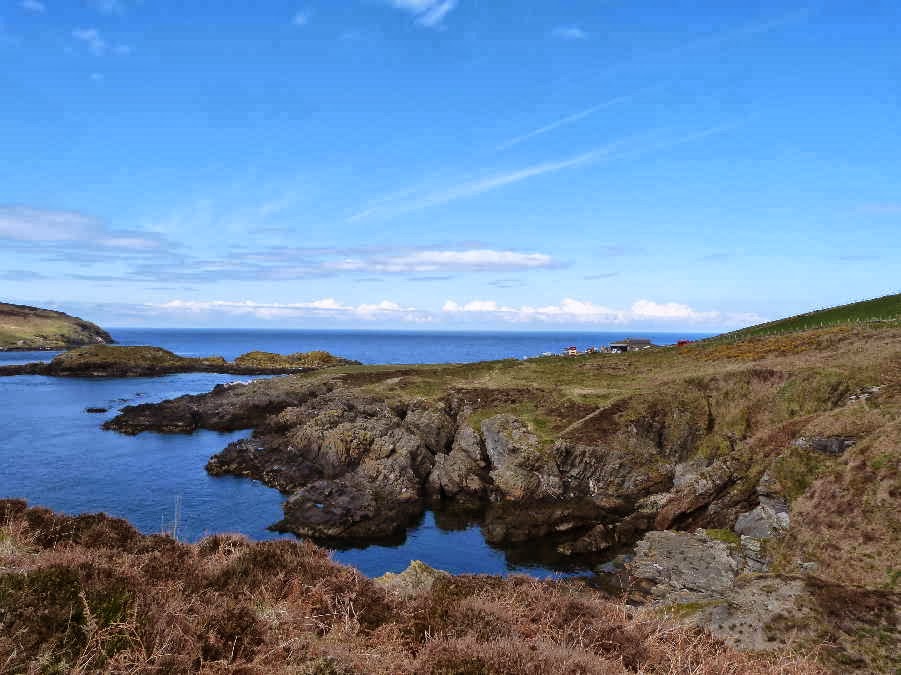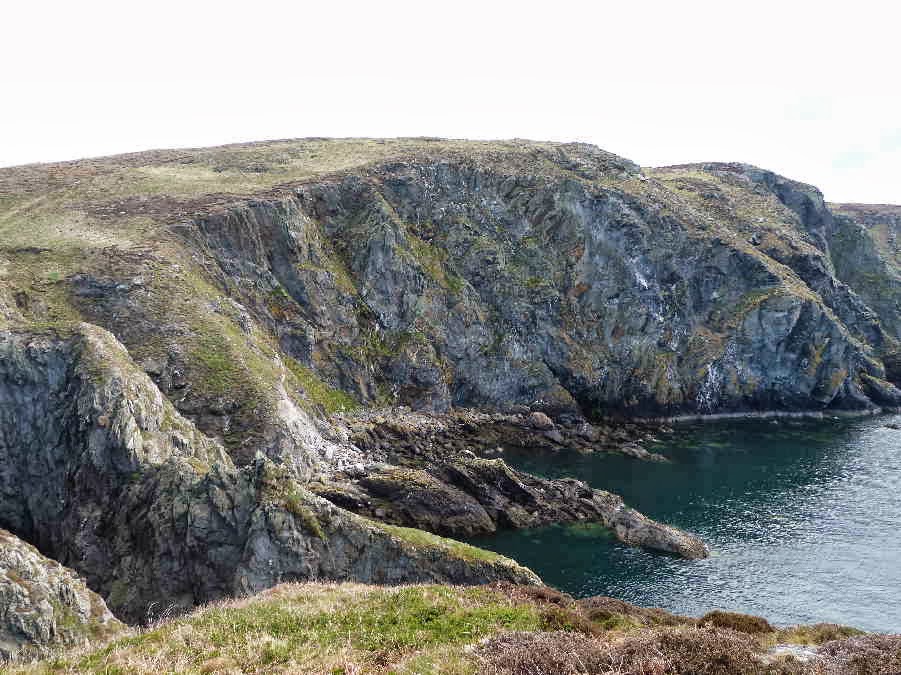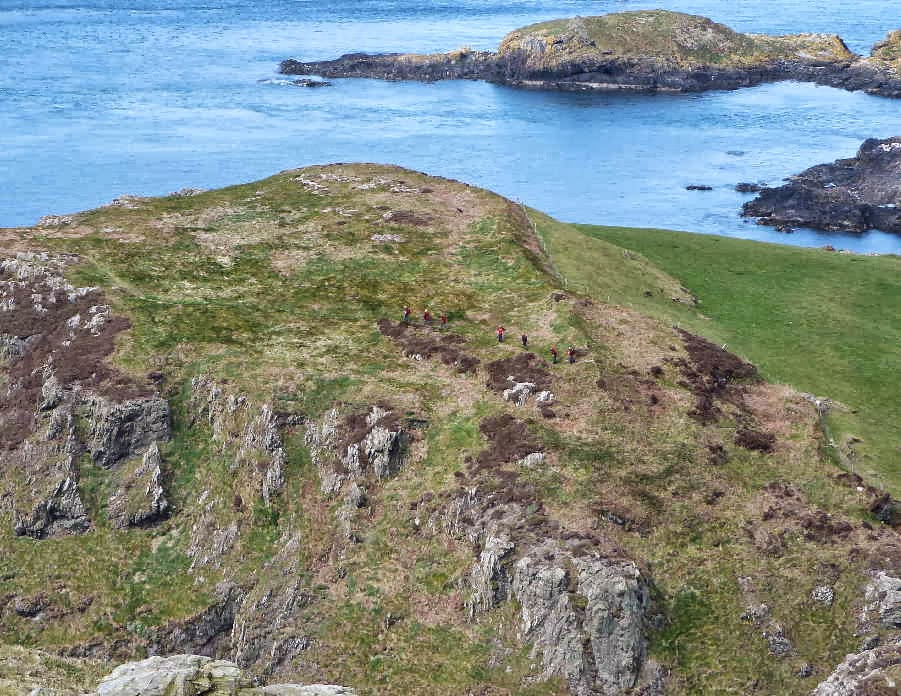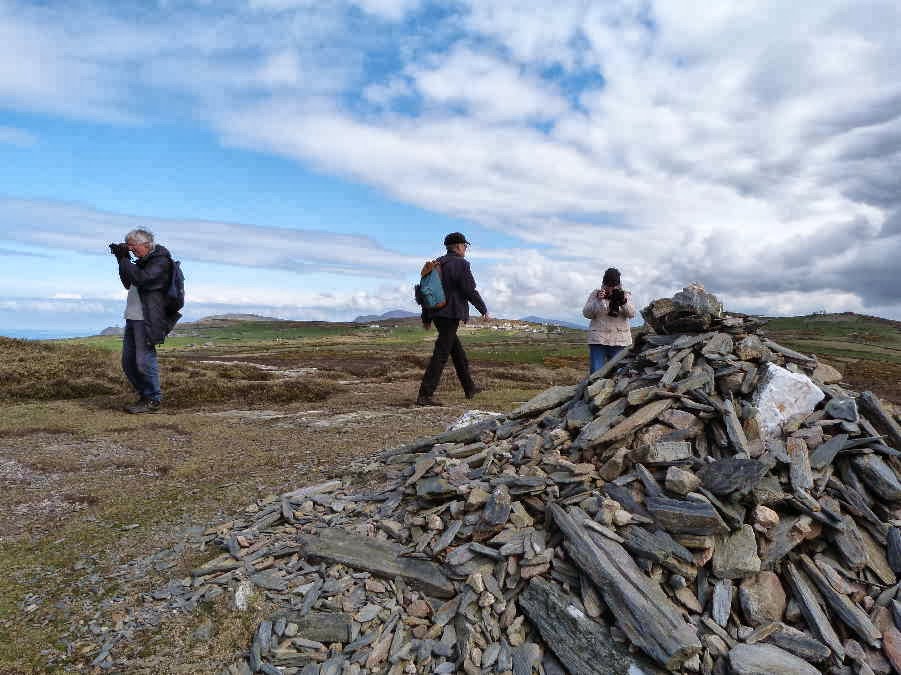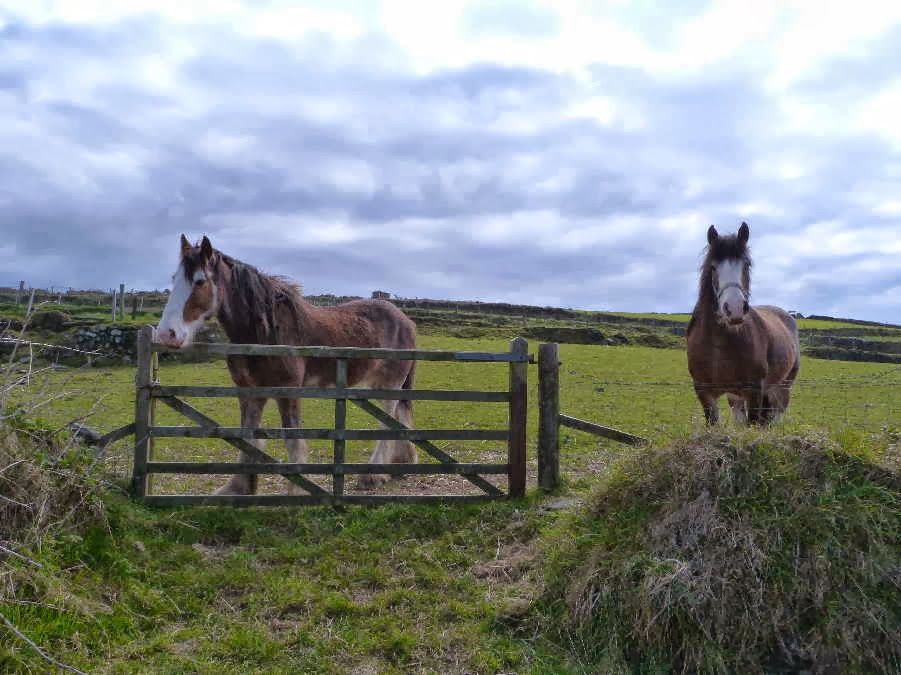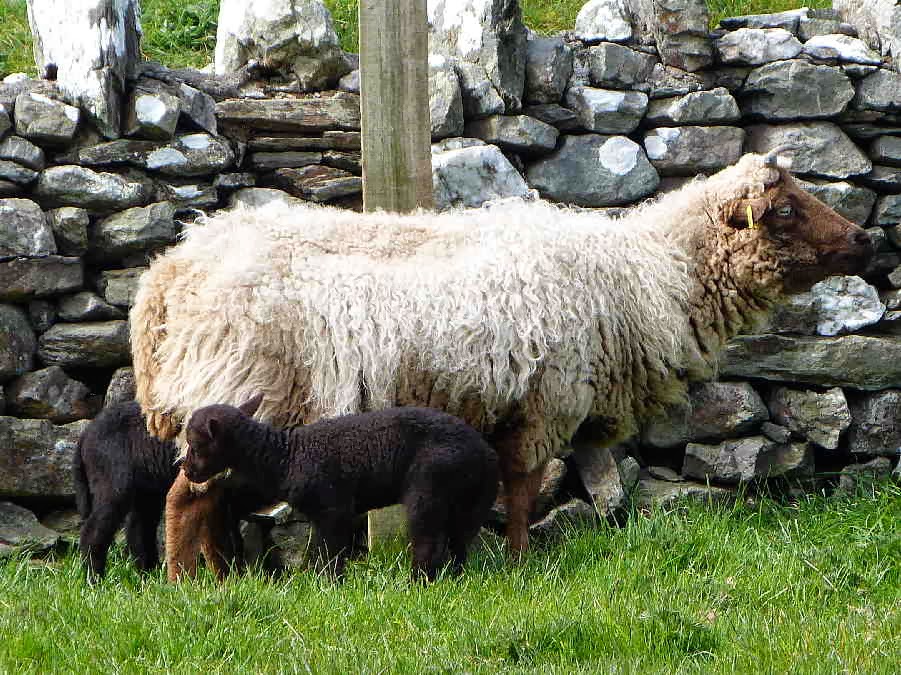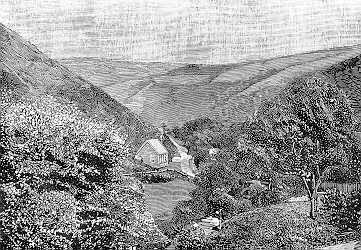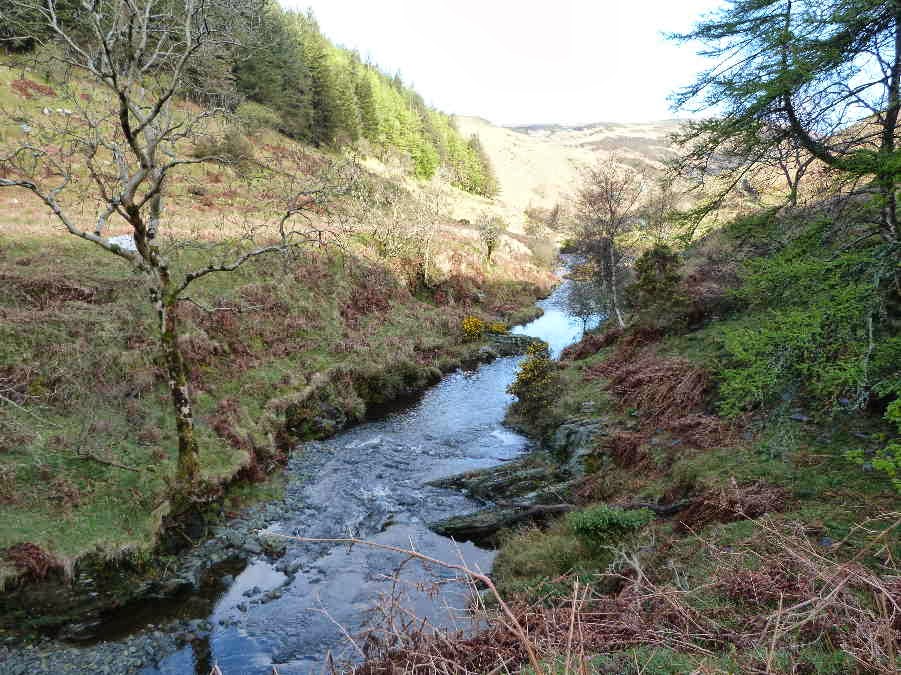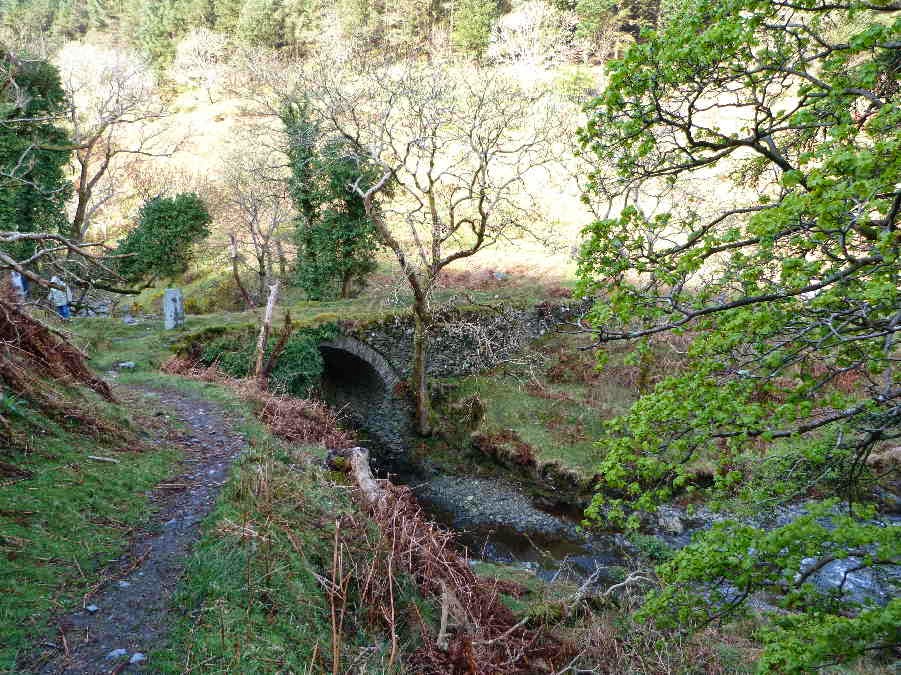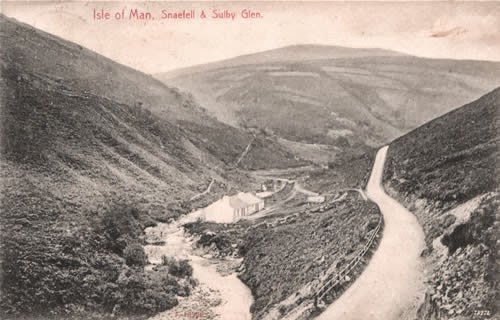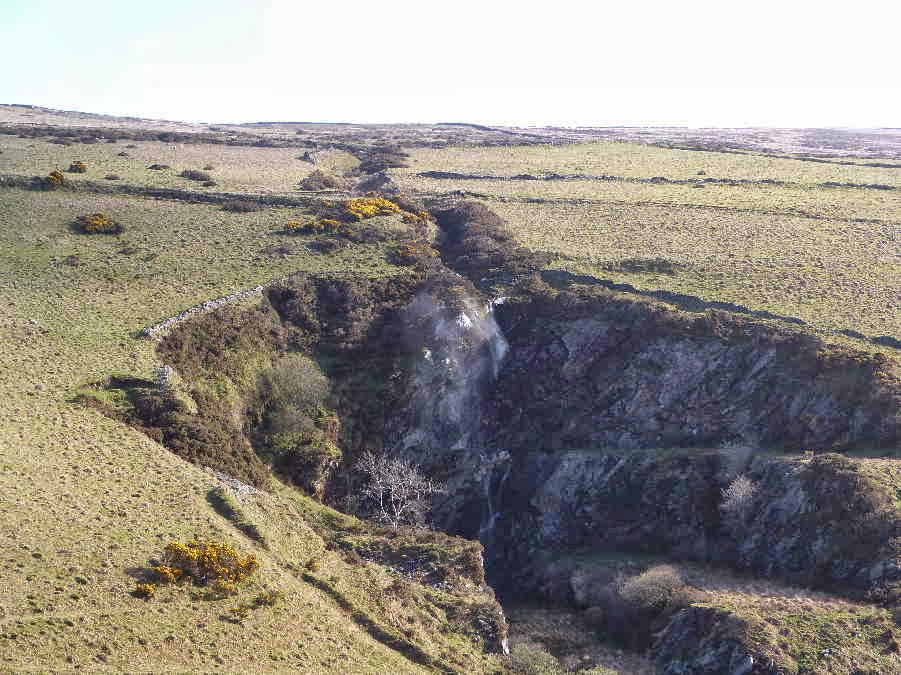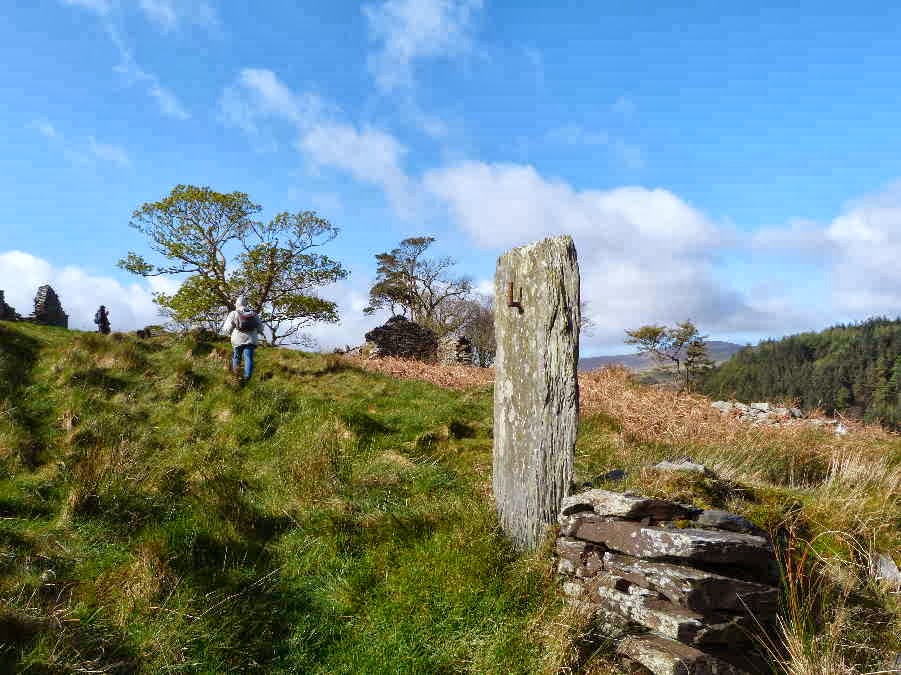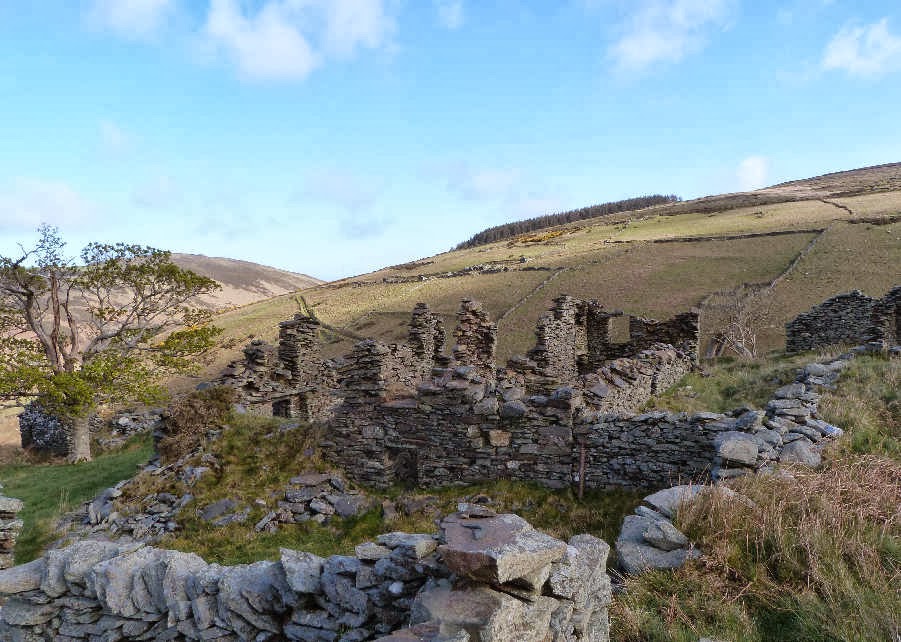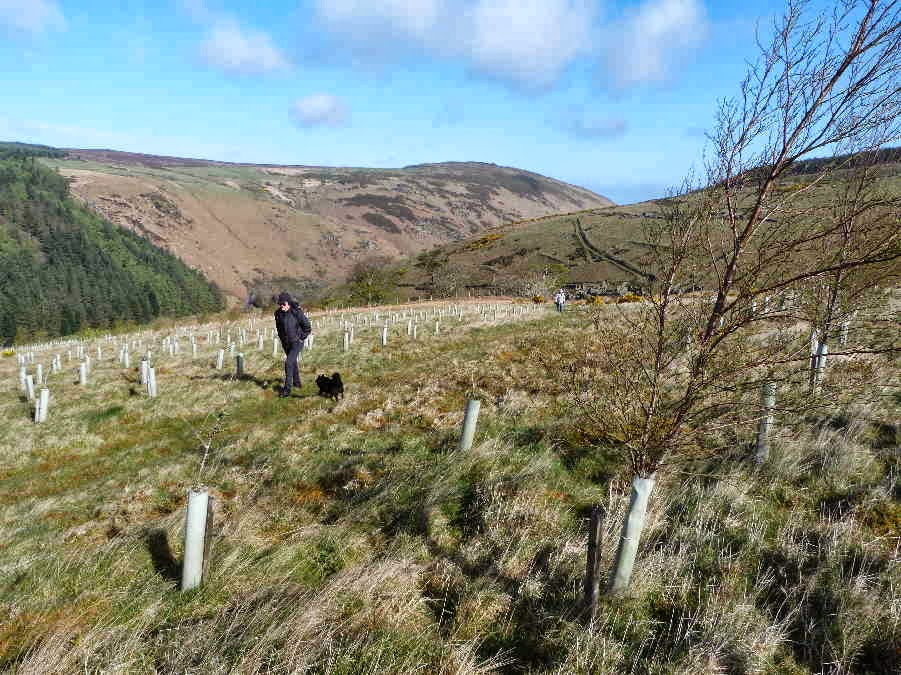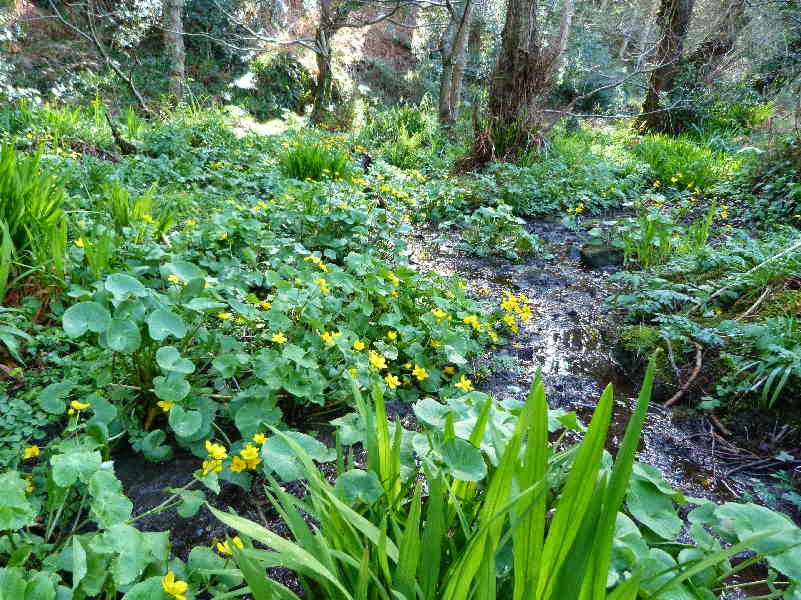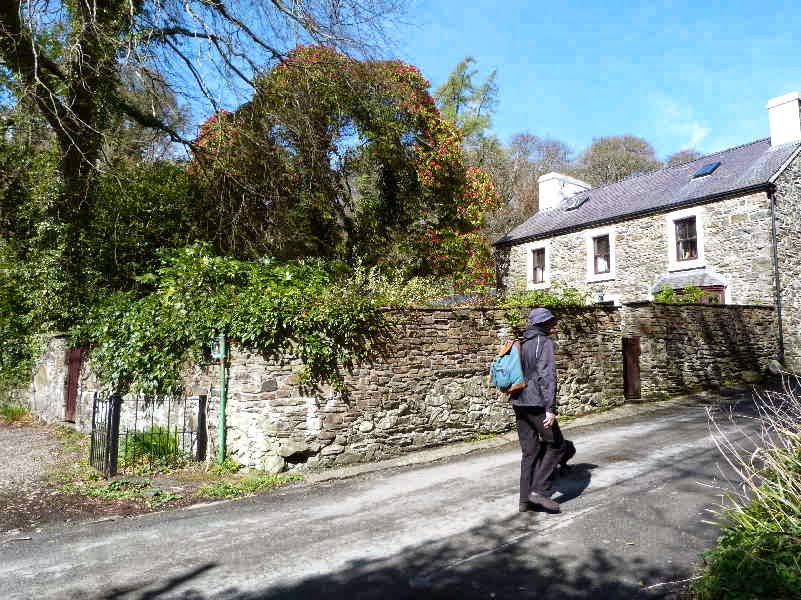Up the airy
mountain/Down the rushy glen (or "the delights of
pedestrianism")
Tuesday, 17th April,
2012
We had been planning to walk through some of
the deserted upland farms on the west side of Sulby Glen, including Sherragh
Vane, but decided at the last minute to visit Ballaskella instead. This old
farm, high up on the east side of Sulby Glen, is on the lower slopes of Snaefell
and was last inhabited in about 1929.
Before the walk, I looked up a poem to find a
quote that I remembered.
". . . but just the used they are
Of fogs and bogs, and all the war
Of Winds and clouds, and ghos'es
creepin'"
It comes from the poem "Kitty of the Sherragh
Vane", one of the narrative poems in the Manx vernacular by T.E. Brown, the best
known Manx poet who died in 1897. (Incidentally, we chose the name Betsy Lee
for one of our Schipperkes because that is the name of another of his poems.
And were even considering calling our next Schippie "Kitty" - but Alice already
had a name when we got her. Just as well as it might have caused confusion with
the neighbouring cats.)
As Sherragh Vane was no longer included in
the walk, that quote was not appropriate. Instead I chose a couple of lines
from a well-known Irish poem as a title for the walk . . . although it wasn't
really a spectacular enough walk to deserve a title.
During my T.E. Brown research, I came across
a guide which he wrote in 1877. http://www.isle-of-man.com/manxnotebook/people/writers/teb/7days.htm Brown was a keen walker (or pedestrian, as he puts it)
and on the fifth day he recommended a walk from Ballaugh to Ramsey which
included part of our Tuesday route. Some of his comments in the linked article
are quite amusing and obviously date from an era before political correctness
was invented.
T.E Brown refers the place where we parked
in Sulby Glen as "a capital spot". And continues
"Here there is a little chapel" (It has since been
converted into a private house but was originally a Wesleyan Methodist chapel
built in 1873),
The old chapel, Sulby Glen (an undated engraved
view).
After following the river downstream in a
northerly direction . . .
. .
. we reached the old stone bridge also mentioned by Brown "and 500 yards
below there is Bishop Murray's bridge". (I could have taken a better
photo if I had time to scramble down the bank to the edge of the river - but the
others were waiting for me.)
From the bridge we climbed over a gate
(the first of many gates and fences) and followed the old zig zag farm road up
to Ballaskella. I found an amusing story about this track after the walk.
Taken from A Manx Scrapbook . . . "Ballaskella (O.S. map), " Wood Farm," lies high on the East
side of the glen. A common-place story connected with it may be repeated here,
if only for the sake of a picturesque phrase. A friend of mine, when a young man
living and working on Ballaskella, was going home from Sulby up the steep zigzag
road to the farm-house about two o'clock one very dark and foggy night, when a
great dog nearly as big as a calf, whose " eyes glittered like the stars," came
up behind and followed him, growling terribly. He, being as
matter-of-fact in his youth as he now is in his seventies, turned round from
time to time and tried to hit it with his stick, but missed it with every "
skutch." Though not afraid, he thought there was something unusual about it, and
mentioned it to his employer the farmer next morning, fearing it might do harm
to the sheep. The farmer said he had seen the same thing himself a number of
times ; there was no fear of its worrying the sheep, but there was " something
not right " about it, and it was best left alone. My friend never went up by
himself late at night afterwards, but preferred, if belated, to stop in Sulby
till the morning." We saw no sign of any strange dog on Tuesday morning
. . . which was just as well because Leo was already a bit spooked about
walking with Teddy, a greyhound that belongs to a friend of
Trevor's.
As we neared the farm, we could look down
into the valley. The little white building by the river is called Irish
Cottages. It is assumed that they were built to accommodate Irish workmen who
came to the Island to build stone walls. To the right of the conifers on the
left hand side of the photo is a long narrow waterfall. George E. Quayle says
that it is called Struan Rheagh - "the laughing stream" - and writes that it is
"a very apt name when you see and hear the water cascading down the steep rocky
face from shelf to shelf and in the winter tumbling down between two fringes of
foot long icicles, a scene never to be forgotten."
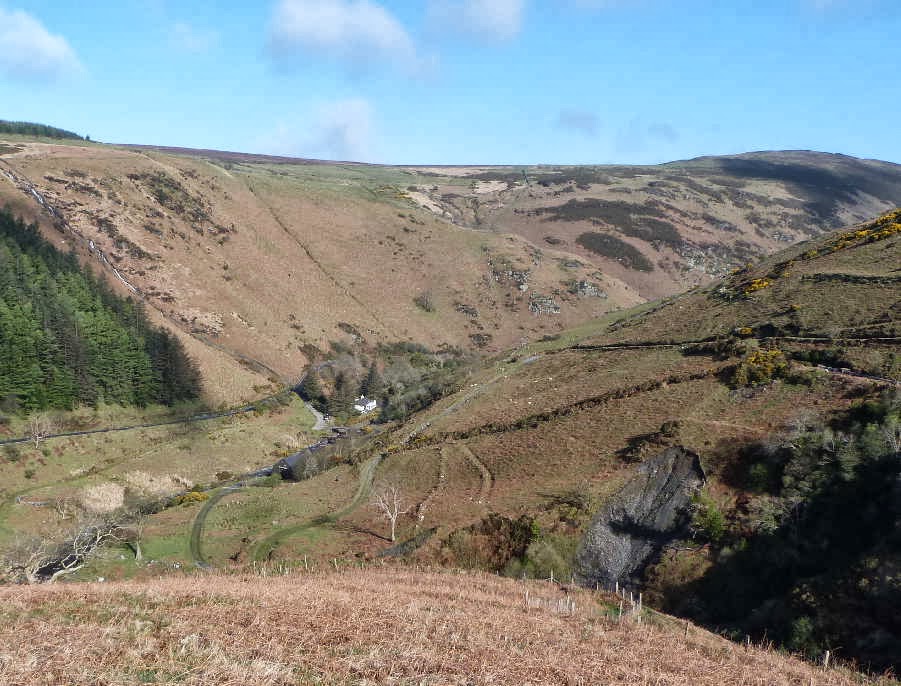
This old postcard photo of the Irish Cottages
(which was taken from further down the glen) shows the hillside that we were
climbing in the centre background.
After crossing the old bridge, T.E. Brown suggested that you "go up a
narrow lateral glen, where they have been trying for slate and, I am sorry to
say, have destroyed one of the sweetest little waterfalls and rock basins in the
British Isles. However, this bothers me more than you." This is the view
of an old slate quarry from the hillside on the south of Brown's "narrow lateral glen" - taken across the
valley (where the Block Eary stream runs down to join the Sulby
river). I wonder whether this photo shows the remains of his "sweetest little waterfall . . .".
It's not quite "the smoke that thunders" . . . but there were a few wispy
patches of mist hovering in front of the falls.
We approached Ballaskella farm past the
typically Manx slate gatepost. George E. Quayle says that these large slabs of
slate were quarried further down the glen at Ballacuberagh and were used as
gateposts and lintels all over the north of the Island.
The remains of Ballaskella . . . over
eighty years after being abandoned on its windswept hillside. The remains of
Slieau Managh farm can be seen on the far side of the Block Eary
valley.
The forestry department has been busy in
recent years - planting young trees on some of the old upland farms. They have
become more enlightened this century and are planting a variety of broad-leaved
trees instead of the ubiquitous conifers that they planted everywhere in the
second half of the twentieth century. I don't know how well these young birches
will do in the wind. They appear to be leaning a bit already. Perhaps the
oaks, which have been planted a little further down, will provide them with a
bit of shelter in future years. The tubes protect the young trees from hungry
rabbits and hares.
Most of the gates on the forestry land were
padlocked and poor Teddy found it difficult to maintain his dignity while being
man-handled over the top.
You can also see from the next photo that the
Island is not short of water - there were plenty of puddles after hard overnight
rain. And the profusion of rushes shows that they are not only found down in
the rushy glens. But the mountain was definitely "airy". Tim claimed that the
wind was so cold that he was in danger of getting frostbite.
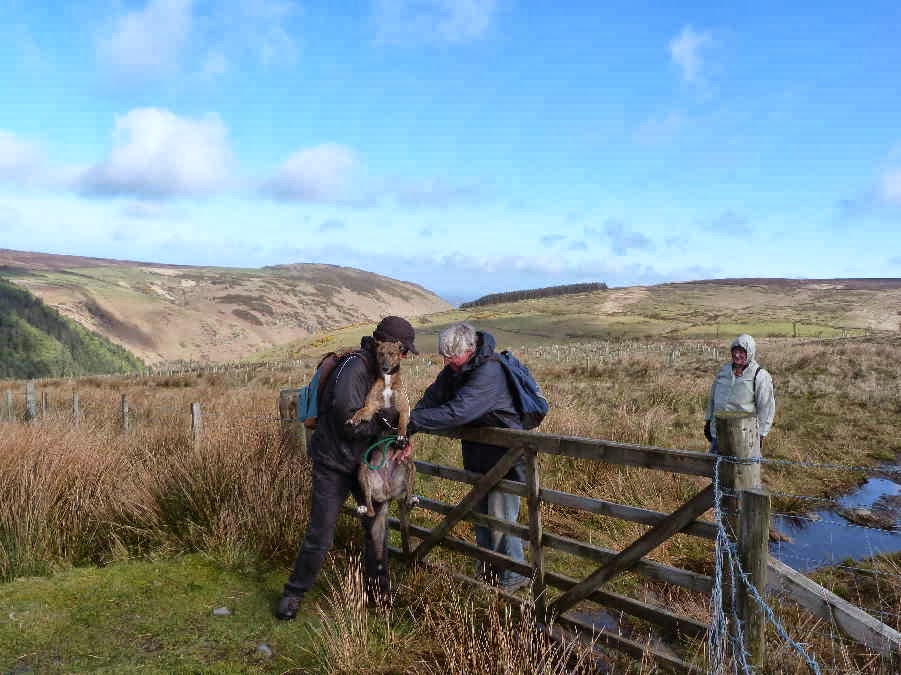
Once we got into the trees, it was sheltered
from the wind and much warmer. We saw three hares sitting at the side of the
track - sunbathing. Teddy got quite hysterical when he saw them. Do
greyhounds inherit some subconscious knowledge that they have been bred to chase
hares? Perhaps not, he also gets quite vocal when he sees sheep. Trevor
commented once "Teddy says he is partial to a nice bit of lamb!"
We linked up with the Millennium Way and
crossed the road from Tholt-y-Will to the Bungalow. Instead of carrying on down
the boring tarred road we decided on an off-piste route down into the valley
above the Sulby Dam. It was easier said than done as the side of the valley is
very steep.
We were heading for the little bridge which
carries water pipes across the stream at the head of the dam. A path runs from
that bridge around the water's edge to the dam wall.
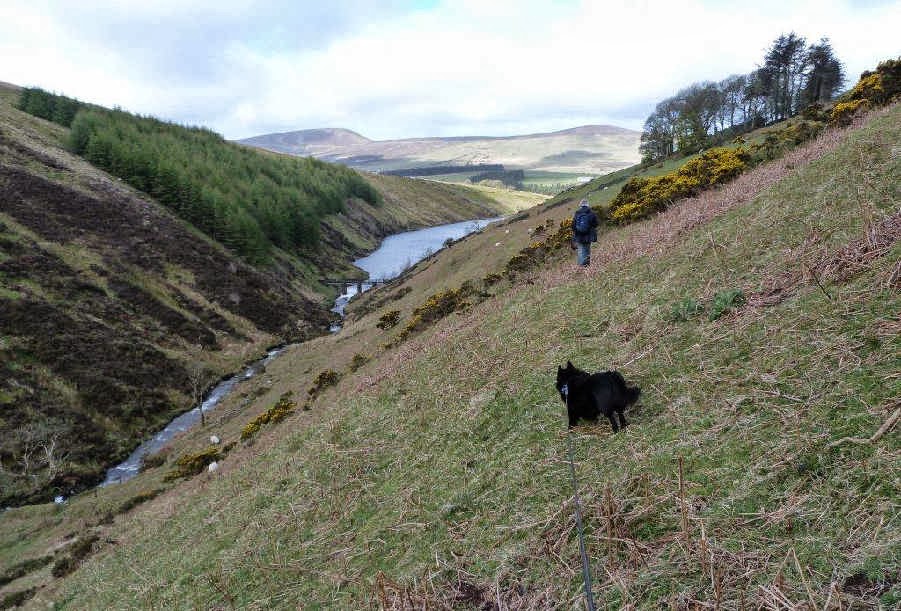
When we reached the dam we decided that a break was needed for refreshments -
and found a convenient post to tether a disconsolate Teddy.
We thought of prolonging the walk with a
loop through the plantation on the west side of the glen but showers were
predicted for late morning and a couple of dark clouds were looming - and that
seemed like a good enough excuse to head for home. But we did stop to climb
over one more fence and take one more photo!

